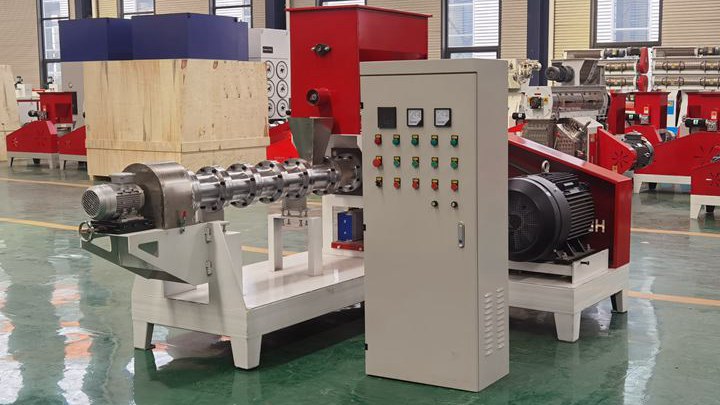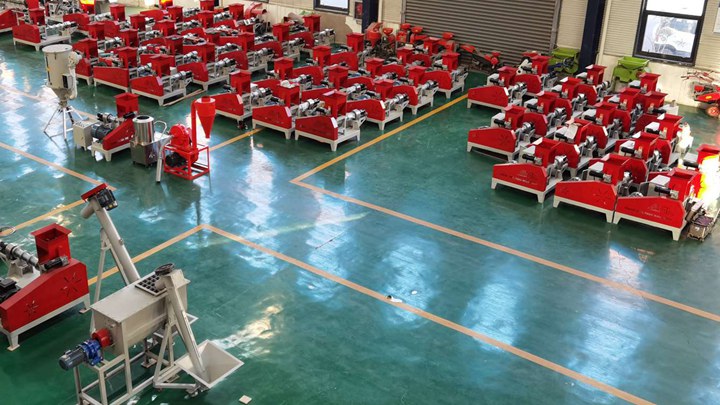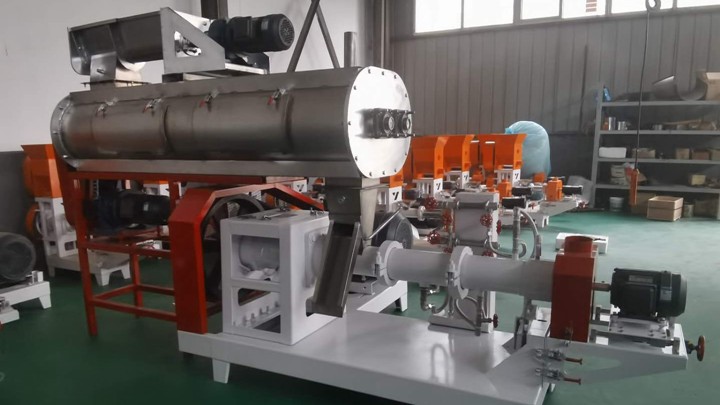
5 days ago · The physical feed quality is critical in enabling the feed to provide the desired nutrition and energy to the fish. Some of the common quality issues are feed integrity, non-uniformity of feed sizes, unable to attain the desired level of floatability (in case of floating feeds), dust creation from feeds, oil leakage, rancidity issues, and raw material quality.
.jpg)
Jan 1, 2023 · Fish meal is the chief and ubiquitous constituent in fish and shellfish feed. In the majority of aquaculture feeds, fish meal is used as the major protein source and constitutes about 60% of the total feed. Studies have shown that 16% of extensive fish production is principally used for fish meal production (Tacon and Metian, 2008). Waste

1. Continious mixing. 2. Partial mixing. Vertical mixers. Horizontal mixers (Welt mixers and pallet mixers) Introduction to Production Steps of Aquatic Feeds (Mixing) Vertical mixers: Grinded ingredients are sent to vertical mixers, the spiral container transport the ingredients above of the mixer.
.jpg)
The technology used in fish feed production is continuously evolving, driven by the need for efficiency, quality, and sustainability. From fish feed extrusion technology to automated production systems, these advancements ensure that fish receive the best possible nutrition, promoting healthy growth and supporting the aquaculture industry’s

Chapter 12. Unconventional Feed Ingredients for Fish Feed. 1. INTRODUCTION 2. PROBLEMS ASSOCIATED WITH UNCONVENTIONAL FEEDSTUFFS. 2.1 Formulation Problems. 3. SELECTED UNCONVENTIONAL INGREDIENTS FOR FISH FEED. 3.1 Soyabean Meal 3.2 Single Cell Protein 3.3 Krill 3.4 Poultry By-Products and Feather Meal 3.5 Other Potential Feedstuffs. 4.
.jpg)
The feed plant should only be used to produce feeds for the Project after the staff have been sufficiently trained in fish feed formulation and nutrition in the opinion of the CTA. A prerequisite for the production of trout feeds by the above feed plant would be for the Bureau to first establish a modest analytical laboratory for the routine
.jpg)
The feeding process in commercial salmon farming is built up as a chain of steps from the assembly of the feed components until the pellets are ingested and assimilated by the fish (Fig. 9.4). Each of these steps entail certain elements that are relevant to consider when discussing digitization of fish feeding.

Organic ingredients and the right Fish Feed Pellet Size contribute to the feed’s efficiency.The process of sinking fish feed formulation is a sophisticated and critical phase that ensures the nutritional needs of different fish species are met.

Aug 12, 2013 · Fish feed value chains. Fish feed production and use in Bangladesh aquaculture has increased dramatically in the past 5 years, with an estimated 1 million tonnes of commercially formulated pelleted feed produced, and between 0.3 and 0.4 million tonnes of feeds produced by micro- and small-enterprises at village level.

Oct 31, 2022 · This Special Issue aims to provide the latest information on fish nutrition and feed technology to develop sustainable aquafeeds. Submissions may take the form of original research, full or mini-reviews, and perspectives on topics including, but not limited to, the following: Fish nutrition, or more generally for aquatic animals;

Feb 28, 2023 · Most of world’s fish and seafood are produced by aquaculture, which is one of the biggest contributors to the world’s food security. The substantial increase in prices of conventional feed
.jpg)
Jul 14, 2023 · The introduction of the developed technology for the production of starter compound feeds at domestic enterprises of the feed industry will reduce the dependence of industrial fish farms on the
.jpg)
Sep 6, 2021 · A significant amount of raw material is produced as a byproduct of fish processing, much of which is used as lowvalue fertilisers, animal feed, or simply discarded.
.jpg)
Jan 1, 2021 · In all these concern, present paper aims to explore the details about fish feed formulation, feed types, feeding pattern, feed conversion and overall quality maintenance. Discover the world's research
.jpg)
fish in Africa is stagnating and in Sub-Saharan Africa has fallen drastically (Muir et al., 2005). To arrest this deploy-rable condition and boost production of fish aquaculture remains the only feasible option that can sustain adequa-te fish supply in Africa. Fish feed technology is one of the least developed